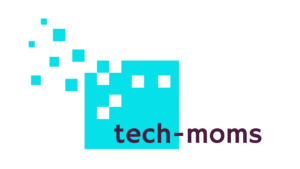The cost can be a big concern when you’re considering going to college. Many colleges use the term “tuition-free,” which sounds great, but the reality might be different. There are often hidden fees and other expenses that you need to consider. Understanding these costs is crucial to making a wise decision about your education.
Finding a budget-friendly option can make a huge difference in how you manage your finances during school. Paying for college in small, monthly payments instead of one large amount can lessen the stress on your wallet. It makes education more affordable and accessible for everyone, no matter their financial situation. You can choose a college plan that works best for you and your future by carefully considering all the costs and benefits.
Taking the time to understand the options available and how they impact your finances will help you make an informed choice. This approach ensures you get the education you deserve without ending up with unexpected debt. Investigating different payment plans and learning about budget-friendly degrees can lead you to a more manageable and successful college experience.
Understanding the Concept of ‘Tuition-Free’ Colleges
The term “tuition-free” can be enticing, but it’s essential to understand what it truly means. Many colleges advertise themselves as tuition-free, promising an affordable path to getting a degree. However, tuition-free doesn’t always mean completely free. Often, there are other costs involved that students need to be aware of. These might include fees for applications, exams, and even technology costs, such as accessing online resources.
Another point to consider is that some tuition-free programs might require students to engage in work-study programs or other commitments that could impact their ability to balance school with other responsibilities. While the promise of no tuition fees sounds appealing, looking deeper into what other financial obligations might be hidden beneath that label is crucial. This helps you make a more informed decision about your education.
Hidden Costs and Fees at ‘Tuition-Free’ Colleges
When you hear “tuition-free,” it is easy to think that your education will cost nothing. However, many tuition-free institutions have hidden costs and fees that add up over time. For example, there can be charges for student services, laboratory usage, library access, and other administrative fees. These expenses can sometimes make tuition-free education more costly than initially expected.
In addition to these fees, there might also be costs for textbooks, course materials, and extracurricular activities. These costs are often not included in the “tuition-free” claim and can catch students off guard. It’s important to do your research and understand the full financial picture before committing to a tuition-free college. Knowing what to expect allows you to budget more effectively and seek out truly affordable education options that align with your financial situation.
Understanding the Concept of ‘Tuition-Free’ Colleges
The term ‘tuition-free’ college can be a bit misleading. While it sounds like you won’t have to pay anything for your education, that’s rarely the case. Many of these colleges do not charge traditional tuition fees, but they often have other costs that students need to pay. These might include charges for registration, course materials, and even certain class fees.
Moreover, some of these ‘tuition-free’ institutions require you to work a certain number of hours in exchange for your education. This work-study model can be helpful for some, but it adds another layer of responsibility. Understanding the true meaning behind ‘tuition-free’ claims is important to know exactly what you’ll be responsible for and to avoid unexpected expenses.
Hidden Costs and Fees at ‘Tuition-Free’ Colleges
Many ‘tuition-free’ colleges have hidden costs that can add up quickly. For instance, there may be technology fees to cover the use of online learning platforms. Other common fees include charges for lab materials, textbooks, and other educational resources. These extra costs can negate much of the savings you thought you were getting.
You may also face administrative fees for services like library access, student activities, and academic advising. These miscellaneous costs can make a supposedly ‘tuition-free’ education quite expensive. Being aware of these potential hidden fees can help you make a more informed decision about your education and avoid surprises down the road.
Conclusion
Saving money on your degree through monthly payments can be a game-changer. Understanding the true costs of online liberal arts degrees and the reality of ‘tuition-free’ claims can help you make smarter financial decisions. Monthly payment plans provide a transparent and stress-free way to manage your education expenses. They offer flexibility, allowing you to focus on your studies while balancing other financial responsibilities.
With monthly payments of just $39, you can pursue your academic goals without breaking the bank. At Newlane University, we are focused on offering affordable, flexible education options that fit into your life. Explore our programs today if you’re ready to take the next step in your educational journey with a budget-friendly plan. Newlane University is here to support you in achieving your dreams while keeping education affordable and accessible.




